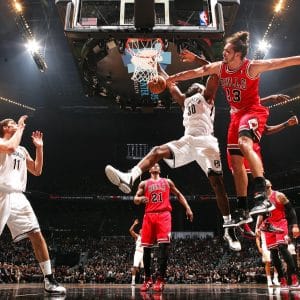Seemingly out of nowhere, esports has become a household name. Capitalizing on the wave of disruptions that have characterized the early 2020s, competitive gaming has successfully maneuvered itself into the spotlight, capturing disaffected audiences seeking competitive thrills in the wake of widespread cancellation of traditional sporting events and making the case for inclusion as a heavyweight entertainment category.
Now sports fans are just as likely to bet the point spread on the outcome of a League of Legends tournament as they would an NBA conference match, and major investors, sponsors and established sports broadcasters, reading the writing on the wall, are eagerly moving into the space.
Yet questions remain about whether eSport’s boom time is a flash in the pan or whether the scene can build on this moment and create a lasting mainstream legacy. By way of attempting to answer this, we’re going to take a look at the key rising trends in the esports sector and will explore what each can tell us about the future of competitive gaming as we progress on into the 2020s.
Growth of mobile eSports
The fastest growing gaming market in the world today is that of mobile gaming. When people think of mobile games, they tend to think of the sort of freemium titles that top the highest-grossing charts on both the App Store and Google Play Store.
Yet thanks to advancements in mobile hardware, increasingly sophisticated and quality games are finding a home on these platforms.
Titles like Arena of Valor and Free Fire are already among the most popular esports played today and, with the likes of Riot Games moving into the space with their League of Legends spin-off Wild Rift, we expect this sector to continue to assert its rising dominance on the wider esports world in the years to come.

Greater ratio of spectators to players
Like any niche interest, those who have watched esports the longest were also active participants in the games they spectated. Since the esports boom, the numbers of spectators to players has decidedly tipped in the favor of the former.
This is good news for the fortunes of the scene, and projections point to this ratio only increasing. The global competitive gaming market needs to continue to grow beyond its original confines and hopefully capture the interest of more generalized sports fans who have no strong interest in actually playing games themselves.
This appears to already be taking place, especially among games deemed more accessible to casual gamers, such as popular tactical shooters, and existing sports-adjacent titles ranging from FIFA and Madden to Rocket League.
eSports lifestyle branding
The sports apparel market is worth over $200 billion globally at present, and if esports is to succeed in making its mark on the mainstream it definitively needs to break into this lucrative sector.
Leading esports teams such as G2 eSports, as well as the popular athlete Ninja, are already benefiting from collaborations with the likes of Adidas and Ralph Lauren, and this trend is only looking set to continue.
One key driver is by way of athletes from other sports throwing their endorsement behind esports franchises. For example, McLaren F1 driver Lando Norris has established his own eSports team and lifestyle apparel company, Quadrant, which has been able to instantly capitalize on the high visibility offered by its founder and quickly make inroads as a growing brand.

The Metaverse
There’s no denying the coming impact of the metaverse and VR technology. Many see esports as the perfect ambassador for VR spectatorship. This is a process already underway when it comes to conventional sports, with leading collaborations between the likes of the Nemesis metaverse and Italian Serie A soccer team AC Milan making a compelling case for VR Sport events viewership.
Not only will a new generation of VR-enabled esports titles make for a captivating gameplay experience, but they will offer unprecedented access to VR-enabled viewership, allowing spectators to view the action from all angles, including first-person views from competing athletes.














